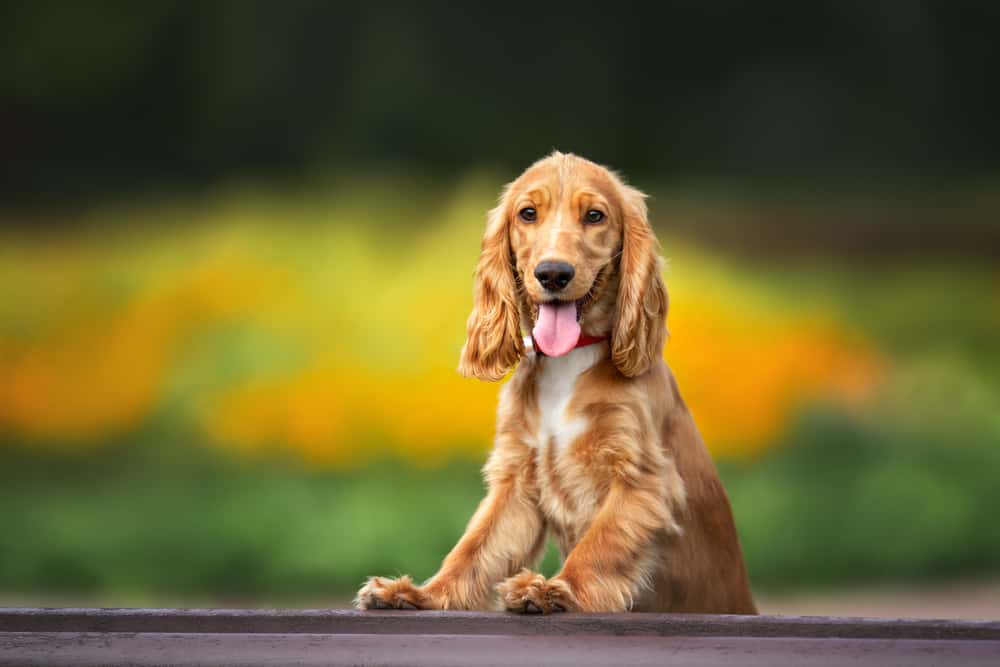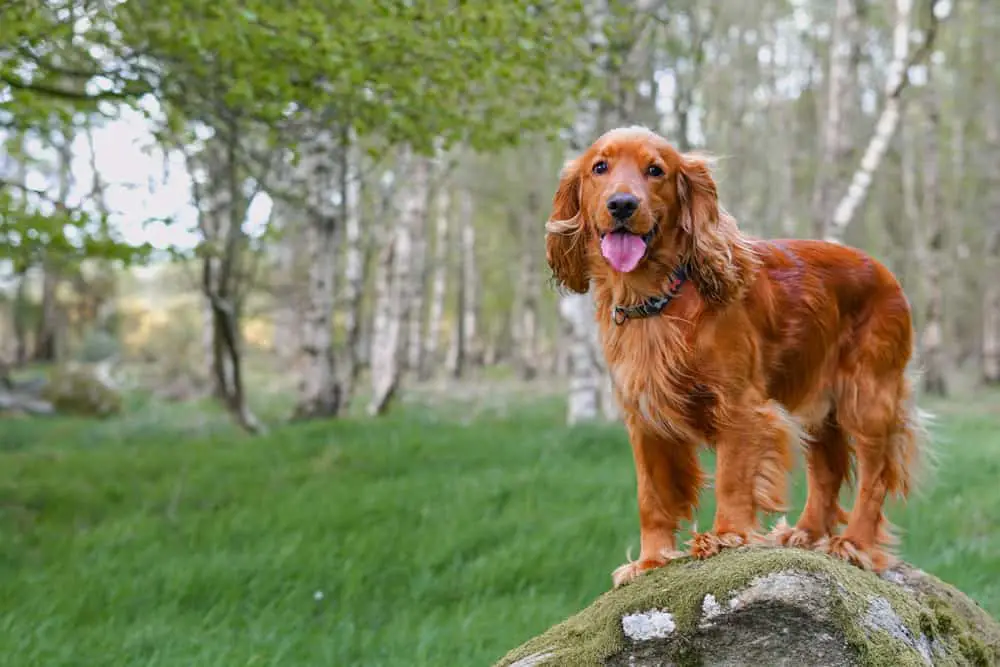Cocker spaniels are happy little dogs with a can-do attitude. They have a resilience, fortitude, and persistence that surprises people who do not know the breed. Although they are not difficult dogs to train if left to their own devices, they are more than happy to set their own course, and those long ears become mere ornaments. Whistles can be very helpful in training cocker spaniels, especially those used for hunting.
The best whistles or cocker spaniels have a clear, loud sound that is heard over ambient noise and catches their attention. The most popular choice for cocker spaniels is the Acme 210.5 pea-less whistle or the Acme 210 pea whistle. Other trainers and owners may prefer other whistles.
There are so many dog whistles available on the market that it is difficult to know which one to choose. Training your cocker spaniel with a whistle is beneficial even if you are not using it for hunting. If you are training your cocker spaniel for hunting, a whistle is an excellent tool to help you get the best skills in your dog.
Why Is Whistle Training Useful For A Cocker Spaniel?
Sometimes people query the need for using a whistle when training a cocker spaniel. Surely your voice would do just as well. The fact is whistles have some distinct advantages over voices.
- Whistles do not disturb, and alert game like a human voice does. This is vital when you are out in the field.
- A whistle’s sound carries further than the human voice.
- Whistles consist of limited frequencies. The human voice includes a complex mix of frequencies, with some easier to hear than others. This makes it difficult for the cocker spaniel to hear when it is some distance away from its owner.
- Whistles produce a consistent sound, but a voice can vary according to health, mood, and energy. It is easier to train a cocker spaniel to a constant sound.
- A whistle spares the handler’s voice and makes hunting a more comfortable hobby. You only have to think of how hoarse you can become after cheering on your winning sports team. Imagine what a hunter’s voice would be like after a day of shouting commands to their cocker spaniel.
What Are The Qualities Needed In A Cocker Spaniel Whistle?
Although cocker spaniels often flush game close to their handler, there are times when they move further away to work. They dive into thickets and dense stands of bush that brush around their head, providing a relatively large amount of background noise. Therefore, it is essential that a whistle used for cocker spaniels is loud and easily heard above other noise.
Cocker spaniels are independent thinkers, and there are times when a loud, sharp, clear whistle is needed to give a firm instruction. The spaniel is far more likely to pay attention to a whistle with these qualities than one which is weak and thready.
A bright lanyard or bright colored whistle is always a good idea when hunting as it allows you to quickly find your whistle if you drop it.
Plastic whistles are less durable than metal, but they are kinder on the mouth if the weather is very cold. Cheaper plastic whistles are generally less durable than more expensive plastic whistles. Some handlers swear by their plastic whistles, saying they are much better than their metal counterparts.
Metal whistles are sometimes produced with rubber mouthparts, preventing the handler from getting frost burns on the lips. The rubber mouth covering is usually brightly colored, which helps to find the whistle if it drops.
An advantage of a metal whistle is that different metals can produce differing degrees of resonance, which aids in the distinctive sound and the purity of the frequencies produced. Brass is an excellent sound conductor, and some handlers will not use any whistle except a brass one.
Should I Use A Pea Whistle Or A Pea-less Whistle For My Cocker Spaniel?
A pea whistle has a small round ball that creates a trilling noise when blown. Some handlers prefer this as they feel it gives them a variety of sounds that augments their training. Other handlers point out that the pea can become frozen in place in cold weather or even get stuck or gummed up in the whistle.
A pea-less whistle produces a clearer sound than a pea whistle, and for this reason, it may be better for a cocker spaniel.

Is An Ultrasonic Or Silent Whistle Good For A Cocker Spaniel?
Ultrasonic whistles produce a sound that is not within the human range of hearing but is heard by dogs. They are sometimes touted as being less irritating if you are working amongst a group of hunters. Some handlers prefer silent whistles for sensitive dogs as they produce a softer sound.
Cocker spaniels are not usually sensitive or easily disturbed dogs. They are practical, feet-on-the-ground kind of dogs and are unlikely to need the sensitivity of a soft whistle. In addition, their penchant for independence makes the softer ultrasonic whistle not a commonly chosen whistle when working cockers.
What Whistle Is Used Most Commonly With Cocker Spaniels?
Historically the Acme 210.5 has been the whistle most used by cocker spaniel owners and handlers. It is a pea-less single tone (5900 Hz) whistle. The sound frequency may vary up to twenty percent according to the user’s skill and blowing strength.
It is not a problematic whistle to blow, and a soft blow produces a good sound. The high frequency helps protect the handler’s ears. The handler will perceive the sound at a lower intensity than the cocker spaniel, whose ears hear these frequencies easily. The dog will hear the sound very clearly at a considerable range.
It is an ideal whistle for use with cocker spaniels as it can be used for close work with cocker spaniels or longer distance work. It is also a whistle that is recommended for aging dogs or dogs that have some hearing loss.
If you are a confirmed pea whistle enthusiast, then the Acme 210 should be on your short-list. These whistles have also been used and proven by spaniel owners for many years. The frequency is 4750 Hz to 5250 Hz.
Both Acme whistles come in bright colors and are easy to spot if you accidentally drop them. Acme has been producing whistles since 1868, and they have a reputation for reliability and durability.
It is easy to replace an Acme whistle due to the manufacturer’s solid history and reputation for producing whistles that dependably create the same tone and frequency. This is an essential characteristic as replacing a whistle you have misplaced or lost in the hunting field is a headache if you cannot find an exact replica.
What Other Whistles Are Recommended For Cocker Spaniels?
There are a variety of other whistles that can be used for cocker spaniels, and they vary in price and features.
- Acme 212 Pro Trialler – is advertised as the best all-round whistle. It is a loud whistle with a consistent frequency that is not influenced by your blowing style. It has been successfully used with dogs that do not respond to other whistles. It is also useful for dogs that work in heavy undergrowth, such as cocker spaniels.
- The Acme 211.5 has a frequency of 5700Hz and a range of just under a mile (1.5km). If your cocker spaniel works further away from you, it is a good whistle for recall and giving instructions from a distance.
- The Fox CMG Mini is a popular pea-less whistle with a comfortable mouth grip that contains no latex – an important factor for owners with a latex allergy. The Fox CMG Mini has a loud high-frequency tone, making it easily heard and distinguished when there is a lot of ambient noise. Fox whistles are reliable and made with consistent quality. The Fox CMG Mini has a smaller mouthpiece than the Fox CMG, and most people prefer the smaller size. A positive characteristic of this whistle is that it works even when it is wet. So if it falls in the water, shake it off and carry on using it.
- The Hiroumer Whistle is made from brass and stainless steel, making it a durable whistle with good sound conducting abilities. The frequency is adjustable, which is useful if you work with multiple dogs, or your dog prefers a particular frequency. This whistle has a dust cap to prevent it from collecting dirt and debris when not in use. This is a good silent or ultrasonic whistle for those that prefer this whistle type.
Individual Choice Makes A Difference
There are many good whistles available for use with cocker spaniels. Each owner will have their own preference, and each dog may respond differently to distinct whistles. Although general assertions can be made, it is vital always to consider the individual.
All healthy dogs hear frequencies between 40 Hz to 60 000 Hz, so any whistle within this range could potentially be used. Often whistles are described as spaniel whistles or labrador whistles because of tradition rather than any other reason.
If you or your dog are not at ease with a whistle, choose another whistle that works better for you both. Speaking to seasoned hunters can be helpful. Many of them may have faced the same issues you are dealing with and can offer advice and opinions.
Will My Cocker Spaniel Respond Automatically To A Whistle?
Advertisements for whistle claim the whistles can teach your dog to sit, stay, stop barking and achieve a host of other accomplishments. This is a selling blurb and should not be believed. Whistles are not magical training devices and are only as valuable as the owner makes them.
Expecting a cocker spaniel to respond automatically to a whistle without training is like expecting someone to understand that a red traffic light indicates you should stop without ever having been told.
Whistles are training devices, and the owner or handler must teach the dog to attach meaning to the sound of the whistle.
Teaching a cocker spaniel to respond to a whistle is like teaching it a language. The dog must learn what the various sounds mean and how to respond to those sounds. The different whistle sounds should be introduced one at a time, with the response to the sound thoroughly reinforced before teaching the next sound.
What Are Three Basic Whistle Commands A Cocker Spaniel Should Know?
The three most crucial whistle commands a working cocker spaniel should know are stop, turn and come. These commands should be taught first at home and reinforced thoroughly before a cocker spaniel is allowed off-leash at a hunt.
Basic dog training can be tedious, but it is essential in training a cocker spaniel to obey commands and become an asset in flushing and retrieving game. Many people feel that buying a whistle and using it two or three times to train their dog will guarantee that the dog can work in a hunting environment.
A cocker spaniel that is not under the owner’s control is in danger of being shot by other hunters or its owner. If a cocker spaniel is not taught to work correctly at a hunt, it will choose its own course and teach itself to hunt – not a happy experience for the owner who will be left with a dog with no recall. The owner and the dog will rapidly become unpopular at hunting events.
Conclusion
The Acme 210.5 and Acme 210 are two whistles that have been used with cocker spaniels for decades. Other brands and types of whistles are available and can be used with cocker spaniels. The general trend is to use a whistle with a loud, clear tone that catches the dog’s attention and can be heard over ambient noise.
Cocker spaniels are often described as the best hunting dog companions. They have an enthusiasm, stamina, and joy in their work that makes hunting with them a pleasure. Using a whistle to train your cocker spaniel enhances the experience for both the hunter and the dog.
Reference
- https://doglab.com/dog-whistle/
- https://www.shootinguk.co.uk/gundogs/gundog-breeds/cocker-spaniel-80014
- https://pheasantsforever.org/BlogLanding/Blogs/Field-Notes/Bird-Dogs-The-Spaniel-Breakdown.aspx
- https://www.shootinguk.co.uk/gundogs/training/dog-training-with-a-whistle-5576
- https://www.easyspanieltraining.com/best-dog-whistles-for-training-a-cocker-spaniel/
- https://www.acmewhistles.co.uk/acme-dog-whistle-210-5

